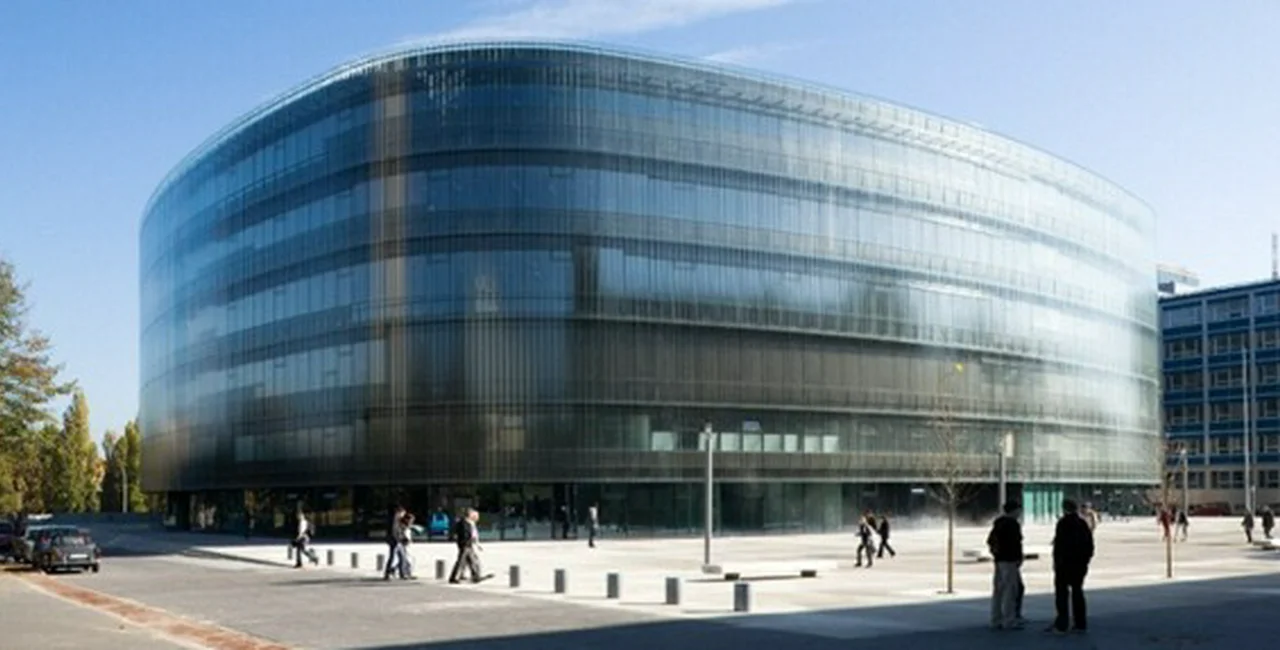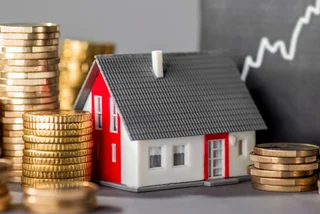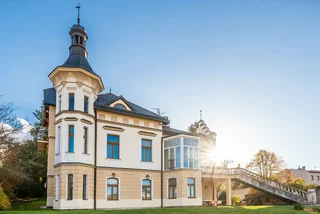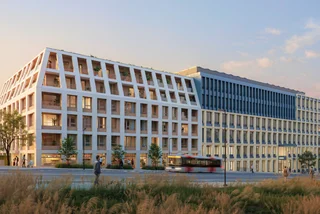This article on sustainable architecture is the first in a series of articles in which Expats.cz will explore the ideas, the progress and the challenges of the green movement in Prague and the Czech Republic. The articles will cover a variety of sectors, including recycling, waste management, biking as a means of transportation, water management and environmental education.
Prague has come to serve as a sort of living museum for a vast array of architectural styles that span centuries. But as environmental concerns dominate the world’s agenda, can the beautiful buildings of the Czech capital also serve as a living example for energy efficiency and eco-friendly design?
PARTNER ARTICLE
In a country that boasts over 12 UNESCO protected historical sites, it can be complicated to make changes to original structures or build anew and incorporate sustainable features. But efforts in introducing environmentally friendly architecture are being pursued nonetheless.
Maitrea Restaurant (from the owners of the popular Lehká Hlava vegetarian restaurant) opened in a sustainably refurbished building on Týnská ulička in 2008. In April 2010, the town of Hustopeče in Southern Moravia saw the opening of a LEED-certified manufacturing facility for international pet food company, Hill’s Pet Nutrition. And in the summer of last year, Mosaic House opened in Prague, a modern style boutique hotel designed by Czech architect Tereza Koucká. Koucká redesigned the 1935 building to incorporate impressive sustainable elements, including solar water heating, energy-efficient lighting, low-flow toilets, electric shutters, water-efficient showers and the country’s first greywater (wastewater) recycling unit.

Mosaic House in Prague 2
Although building sustainably is a feat in itself, companies around the world have been starting to apply for green building certification to authenticate and advertise their commitment to environmental practices. One such certification system, created by the US Green Building Council, is known as LEED (Leadership in Energy and Environmental Design), and though not completely official in Europe, it has already been made use of in several European nations, including Italy, Spain, Sweden and the Czech Republic. The UK’s BREEAM certification system is currently Europe’s official standard for green building and design.

ČSOB headquarters in Radlice, Prague
In 2007, ČSOB Group opened its award-winning, LEED Gold certified headquarters in Prague, becoming the first LEED-certified building in the country. Skanska, which managed the ČSOB project, is now bringing the country another first—the first LEED Platinum (the highest LEED certification) building with the construction of the City Green Court office in Pankrác. The eight-story structure will see a drastic reduction in energy consumption with a highly efficient building envelop, and also features the use of natural ventilation, state-of-the-art mechanical systems, reduction and reuse of stormwater runoff, indoor air quality control, green roof and the use of local and recycled construction materials. Natural daylighting is key to the building, hinging upon a light-filled multi-story atrium.

Inside the headquarters
City Green Court is the third building to be designed by New York-based architectural firm Richard Meiers & Partners as part of a 10-year revitalization master plan for a superblock on the Pankrác Plains. Construction on City Green Court began in September 2010 and completion is slated for early 2012.
“Skanska Property Czech Republic, our associate architect CUBOID, and our local consultants in Prague are fast becoming experts in green building design,” said partner in charge Dukho Yeon from Richard Meier & Partners. “With its tautly composed form and elements, City Green Court embodies a certain discipline and restraint designed within the framework of Skanska´s green initiative. We hope that we continue to educate each other and influence future development with a critical outlook on architecture and social responsibility.”
Headquartered in Sweden, Skanska is no stranger to building sustainably, and has in fact brought Czech Republic many of its other green design structures. The Kladno Environmental Education Center, which opened in 2009, features a PassivHaus design – a German style that results in ultra-low energy consumption–and won the the Czech Ministry of Environment Ecological Building Award in 2009 and the Czech State Environmental Fund´s Energy Efficiency Building of the Year award in 2010.

The Kladno Environmental Education Center
Since the early 2000s, there have been several dozen private residences constructed in the Passiv Haus style all around the Czech Republic. But a recently introduced EU directive is setting the sustainability bar rather high: all new buildings in the EU, both commercial and residential, are required to be “nearly zero energy”, in accordance with Passiv Haus criteria, by 2020. Centrum pasivního domu (The Passive Haus Centre), a Brno-based non-profit organization that helps to promote the idea of Passive Haus construction in the Czech Republic, claims its vision is that by 2018, every new house in the Czech Republic will be constructed according to the Passiv Haus standard.
Already an oasis for the architecture buff, and a fertile ground for experiments in sustainable building, Prague has just stepped up its efforts in guiding future architects in the right direction with the opening of a new and private architecture school, ARCHIP. Classes began in the fall of 2010, and include a course in sustainable architecture. The course is taught by Ondrej Hofmeister, architect at the award-winning design firm Projektil, the minds behind the Czech Technical University’s new National Technical Library, completed in 2009 and winner of the 2009 Czech Grand Design award and the 2010 Grand Prix of Architects.
Do you have any experience with sustainable architecture in the Czech Republic? Let us know your thoughts through the form below.












 Reading time: 4 minutes
Reading time: 4 minutes 
















